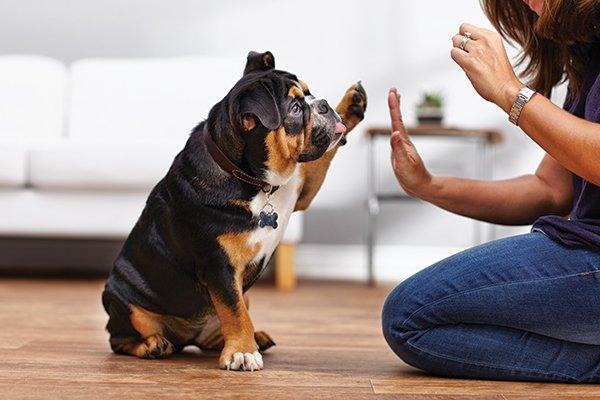Unlocking the Secrets of In-Home Dog Training: A Journey to Harmony
Welcoming a furry companion into your home brings joy and companionship, but it also comes with the responsibility of teaching them the ways of the world. In-home dog training offers a unique solution, bridging the gap between your dog’s natural instincts and the rules of your household. Imagine a training experience tailored to your dog’s specific environment—where distractions are minimized, and lessons are seamlessly integrated into everyday life. This article explores the myriad benefits of in-home dog training, providing insights into techniques, approaches, and the transformative bond that strengthens between you and your canine friend. Whether you are welcoming a puppy or seeking to correct unruly behavior in an older dog, this journey towards harmony begins at home.
Table of Contents
- Understanding the Benefits of In-Home Dog Training Approaches
- Tailoring Training Methods to Your Dog’s Unique Personality
- Essential Tools and Resources for Successful Home Training
- Building a Strong Bond Through Consistent Training Practices
- Q&A
- Closing Remarks
Understanding the Benefits of In-Home Dog Training Approaches
In-home dog training provides several substantial advantages that often make it the preferred choice for pet owners. Personalized Attention is a significant benefit; trainers can tailor their techniques and focus on specific behavioral issues unique to your dog’s environment. This focused method allows dogs to learn in a familiar setting, reducing anxiety and enhancing their ability to absorb commands and behavior modifications. Additionally, flexibility in Scheduling can be a game-changer. With in-home training, pet owners can choose times that fit their busy lives, ensuring they can commit to the necessary sessions without the added stress of traveling to a facility.
Another key aspect is the Real-Life Situational Training that in-home approaches facilitate. Unlike traditional methods held at training centers, in-home sessions can incorporate everyday distractions and stimuli, making it easier for dogs to learn how to behave in real-world scenarios. Trainers can work with the unique circumstances of your household, whether it’s dealing with other pets, children, or specific environmental challenges. Moreover, the empowerment of Owner Involvement allows pet owners to actively participate in the training process. This involvement not only strengthens the bond between pet and owner but also ensures that training is consistent and effective throughout the dog’s life, fostering a well-adjusted and obedient companion.
Tailoring Training Methods to Your Dog’s Unique Personality
Understanding your dog’s distinct personality traits is the key to effective training. Every dog is an individual, influenced by breed characteristics, past experiences, and inherent temperament. Some dogs thrive on routine and structure, while others may be more spontaneous and need encouragement to focus during training sessions. To tailor your training approach, start by observing your dog’s behavior in various situations. Take note of how they respond to different commands, distractions, and rewards, and adjust your methods accordingly.
It helps to categorize your dog’s personality to implement a personalized training plan. Consider the following traits:
- Shy or anxious: Utilize gentle reinforcement and create a calm environment that reduces stress.
- High-energy: Incorporate play and physical activity into training sessions to maintain their interest.
- Stubborn: Use patience and gentle persistence while introducing variety in commands to keep them engaged.
- Social and outgoing: Integrate group training classes to provide social stimulation alongside skill development.
By aligning training techniques with their personality, you can foster a more productive learning experience. Establish clear communication through consistent cues and ensure positive reinforcement is in place to build trust and loyalty. Remember, the goal is to create an enjoyable experience for both you and your dog, setting the groundwork for a solid bond that extends beyond just obedience.
Essential Tools and Resources for Successful Home Training
To embark on a successful journey of in-home dog training, having the right tools at your disposal can make all the difference. Training treats are an absolute necessity; they not only keep your dog motivated but also reinforce positive behavior. Look for small, soft treats that are easy to chew and can be consumed quickly to keep the training flow uninterrupted. Additionally, a clicker or other training sound can help mark desirable behavior instantly, creating a clear communication channel between you and your furry friend. Don’t forget about a reliable leash and collar - it’s essential for safety and control during training sessions, especially if outside distractions test your dog’s focus.
A well-organized training area can significantly elevate your home training experience. Training mats or designated spaces will give your dog a consistent place to learn commands, coupled with appropriate toys that encourage engagement and reduce anxiety. Consider using a whiteboard or chalkboard to track progress and set goals visually. To facilitate ongoing education, online resources and communities can also be invaluable. Here are some recommended resources:
| Resource Type | Examples |
|---|---|
| Online Courses | Udemy, Coursera |
| Training Books | “The Power of Positive Dog Training,” ”Dog Training for Dummies” |
| Community Forums | Reddit, Dog Forum |
Building a Strong Bond Through Consistent Training Practices
Establishing a deep connection with your dog begins with consistent training practices that foster understanding and trust. By engaging in regular sessions, you not only teach your furry friend essential commands but also create a shared experience filled with positive interactions. This foundation helps your dog feel secure and confident, making them more receptive to learning. Here are several effective training methods to implement consistently:
- Positive Reinforcement: Reward your dog with treats, praise, or playtime when they exhibit desired behaviors.
- Short, Frequent Sessions: Keep training sessions enjoyable and brief, ideally lasting 5-10 minutes, to maintain your dog’s focus.
- Variety in Commands: Introduce a mix of commands and tricks to stimulate your dog’s mind and prevent boredom.
- Consistency in Signals: Use the same commands and gestures consistently to minimize confusion.
Maintaining a structured routine not only enhances learning but also strengthens your bond. Incorporating training into your daily activities can seamlessly integrate these practices into your dog’s life. Whether it’s practicing a sit command before meals or reinforcing basic obedience on walks, these moments cultivate a partnership built on respect and communication. Consider tracking your progress with a simple table:
| Week | Command Practiced | Duration (minutes) | Notes |
|---|---|---|---|
| 1 | Sit | 5 | Positive response with treats. |
| 2 | Stay | 7 | Improved focus over time. |
| 3 | Come | 10 | Increased distance successfully. |
Q&A
Q&A: In-Home Dog Training
Q: What is in-home dog training?
A: In-home dog training refers to a personalized approach where a professional trainer comes directly to your home to work with you and your dog. This method allows for training in a familiar environment, encouraging more effective learning by addressing specific behaviors in a context your dog is comfortable with.
Q: Why should I choose in-home dog training over traditional classes?
A: In-home training offers several advantages, such as convenience and customization. You avoid the distractions of public classes, and the training can be tailored to your home dynamics, such as particular challenges related to your living space or family routine.
Q: What kind of behaviors can be addressed through in-home training?
A: In-home dog training can address a wide range of behaviors, from basic obedience commands to more complex issues like separation anxiety, barking, or aggression. Trainers can also help with potty training and teaching appropriate play behavior, making it a comprehensive solution for various dog-related challenges.
Q: How long does an in-home training session typically last?
A: Sessions usually last between 60 to 90 minutes, depending on the specific needs of your dog and the goals set for each training session. This duration allows for effective learning and practice of new behaviors without overwhelming your furry friend.
Q: How can I prepare for an in-home dog training session?
A: Preparation is key! Ensure that the training area is free from distractions, have treats ready for rewards, and be open to participating actively in the training process. It’s also helpful to write down any specific issues or goals you have in mind to discuss with the trainer.
Q: Is in-home training suitable for all dog breeds and ages?
A: Yes, in-home training is suitable for dogs of all breeds and ages! Whether you’re working with a rambunctious puppy or a more mature dog, trainers can adapt their methods to suit your dog’s individual temperament and learning style.
Q: How many sessions will I need?
A: The number of sessions required can vary greatly depending on your dog’s behavior, your training goals, and how consistent you are with practice in between sessions. Many clients find that a series of sessions (often ranging from 4 to 8) can lead to significant improvements.
Q: Will I need to reinforce training after the sessions?
A: Absolutely! Consistency and reinforcement at home are crucial for solidifying the training results. Incorporating positive reinforcement techniques and practicing commands in different situations will help your dog retain what they’ve learned and continue to improve.
Q: How do I choose the right in-home dog trainer?
A: Look for trainers who have certifications from reputable organizations, positive reviews from clients, and a training philosophy that aligns with your values. It’s often beneficial to conduct an initial consultation to discuss your dog’s behavior and your training goals to ensure a good fit.
Q: Can in-home training help with multiple dogs?
A: Yes, in-home training can be effective for households with multiple dogs! Trainers can provide strategies to manage group dynamics, address individual behaviors, and teach commands that benefit all dogs in your household.
Q: How do I know if in-home training is working for my dog?
A: You’ll likely notice positive changes in your dog’s behavior, such as improved obedience, reduced negative behaviors, and more effective communication between you and your dog. Consistent practice and patience are key indicators of success in any training program.
—
In-home dog training can be a transformative experience for both you and your furry companion, creating a happier and more harmonious home!
Closing Remarks
As we close the door on our exploration of in-home dog training, it’s clear that the journey towards a well-behaved canine companion is as unique as each dog itself. Tailoring training to the home environment allows for greater comfort and enhances the learning experience for both you and your furry friend. By fostering a strong bond built on trust and communication, you’re not just teaching commands; you’re building a lifelong relationship.
Whether you’re facing the challenges of a mischievous pup or simply seeking to refine your dog’s skills, remember that patience and consistency are your greatest allies. Every paw-sitive step taken within the walls of home paves the way for a harmonious partnership. So gather those treats, muster your enthusiasm, and embrace the adventure that lies ahead. With the right approach, your home can be the heart of transformation, turning everyday moments into opportunities for growth and connection. Here’s to happy tails and unique training journeys — let the learning begin!



